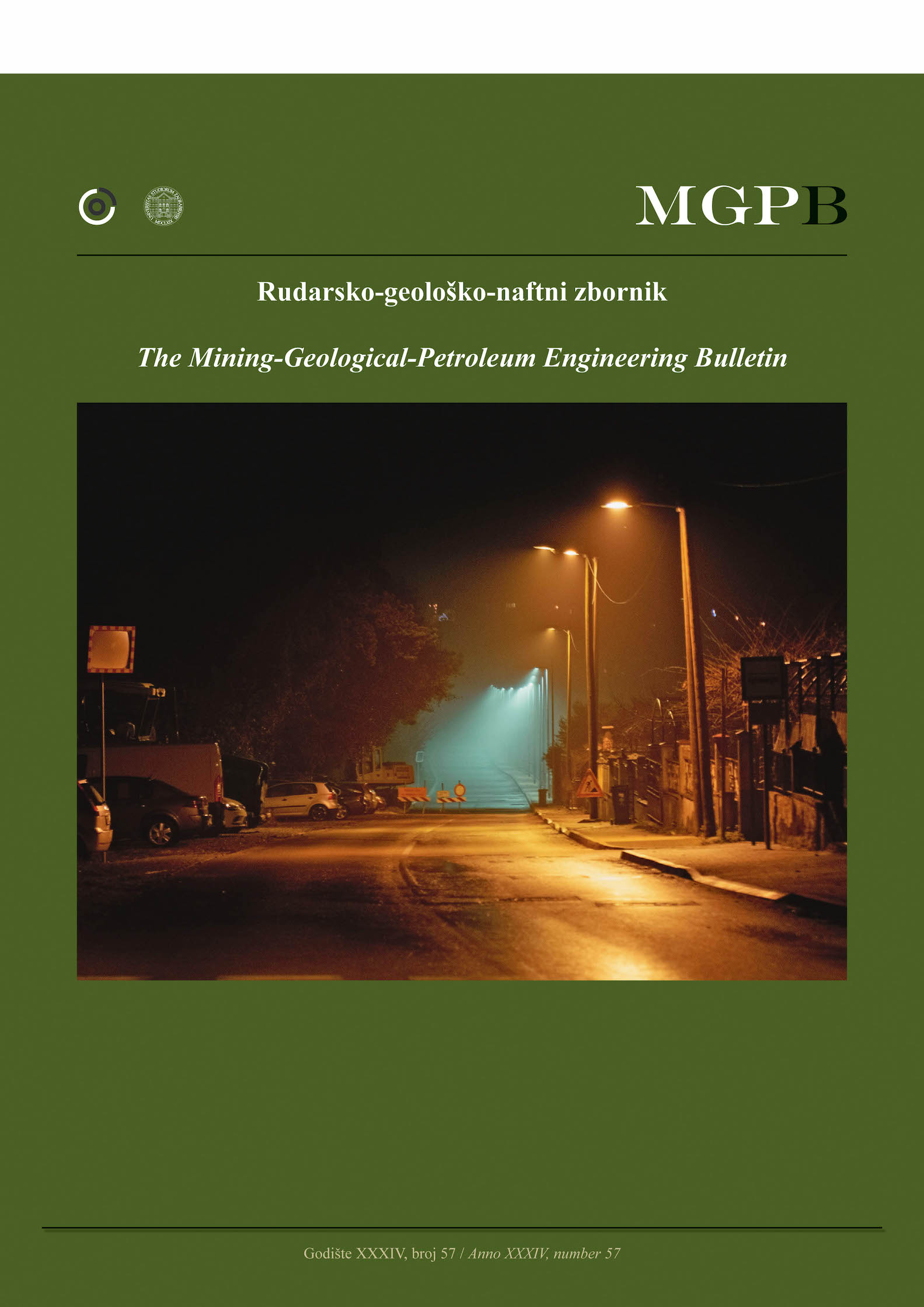Influence of phosphate layer on adhesion properties between steel surface and organic coating
DOI:
https://doi.org/10.17794/rgn.2022.1.2Keywords:
corrosion, non-alloy steel grade, phosphatizing process, epoxy coatingAbstract
In this paper, tests of some physico-chemical properties of protective epoxy coating on non-alloy structural steel grade type S235JRG2 have been carried out. This is a significant construction material whose use is remarkably important for many steel products such as H beam, I beam, transmission towers, steel pipe etc. Coatings represent one of the ways to protect metal from corrosion. The properties of coating thickness, hardness, gloss, and adhesion were investigated. The same properties were tested by exposing the sample non-alloy steel plates to corrosive conditions of the salt and humid chamber and seawater. Part of the samples prior to application of the coating were immersed to phosphate solution to further investigate the effects of phosphatization on the properties of the coating. After exposure of the plates to the humidity chamber conditions, no traces of corrosion products, cracking or peeling of the coating were found on the surfaces. The plates tested in the sea water and salt chamber showed a minor damage on protective coating. The traitability properties were tested by the Pull off Adhesion test. Force pull adhesion off test shows less value for unphosphated samples than for phosphated ones.Downloads
Published
How to Cite
Issue
Section
License
Copyright (c) 2021 authors and journal

This work is licensed under a Creative Commons Attribution 4.0 International License.
Creative Commons-BY
Authors who publish with this journal agree to the following terms:
In agreeing this form, you certify that:
- You read the ethical codex of the RGN zbornik available at journal web.
- You submitted work is your original work, and has not previously been published and does not include any form of plagiarism.
- You own copyright in the submitted work, and are therefore permitted to assign the licence to publish to RGN zbornik.
- Your submitted work contains no violation of any existing copyright or other third party right or any material of an obscene, libellous or otherwise unlawful nature.
- You have obtained permission for and acknowledged the source of any illustrations, diagrams or other material included in the work of which you are not the copyright owner.
- You have taken due care to ensure the accuracy of the work, and that, to the best of your knowledge, there are no false statements made within it.
- All co-authors of this submitted work are aware of, and in agreement with, the terms of this licence and that the submitted manuscript has been approved by these authors.
Publication licence
You retain copyright in your submitted work, according to journal license policy (CC-BY). By signing this form you agree that RGN zbornik may publish it under the publication licence. In summary the licence allows the following:
Anyone is free:
- To copy, distribute, display, and perform the work.
- To make derivative works.
Under the following conditions:
- The original author must always be given credit.
- The work may not be used for commercial purposes.
- If the work is altered, transformed, or built upon, the resulting work may only be distributed under a licence identical to this one.
Exceptions to the licence
In addition to publishing the work printed under the above licence, RGN zbornik will also enable the work to be visible online.
The journal editorial can change the licence rules anytime but it cannot retroactively restrict author(s) rights.


